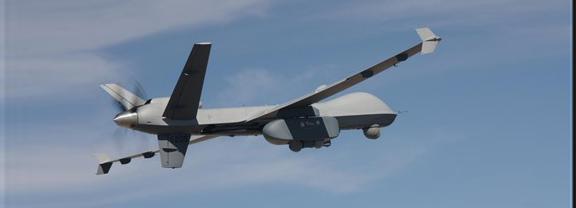AgilePod® Flies High Over “Valley of Death”
In 2015, the Program Executive Officer (PEO) for the Air Force Life Cycle Management Center Intelligence, Surveillance, and Reconnaissance/Special Operations Forces (ISR/SOF) Directorate (AFLCMC/WI) talked about a need for increasing operational flexibility while lowering overall pod costs. AgilePod® was conceived as a way to satisfy these needs with the vision being an open-architecture, multi-mission, platform-agnostic pod with the government having unlimited data rights and owning the technical baseline.
In late 2016, the original AgilePod®30 (30”x30” cross-section) prototype was delivered to the Air Force Research Lab Materials and Manufacturing Directorate’s Electronics and Sensors Branch (AFRL/RXME) by KeyW (now Jacobs Engineering). Since then, AgilePod®30 has proven the feasibility of a single pod carrying multiple sensors (at the same or different times). It has also demonstrated the ability to fly the same pod on multiple platforms with little, if any, reconfiguration. Additionally, ManTech has shared the AgilePod®30 technical data package (TDP) with over 100 pod developers, sensor designers and platform integrators allowing them to virtually fit AgilePod® with their sensor(s) and/or platform(s).
Since the beginning, AgilePod® has been a very collaborative program among the Advanced Technologies Branch of the ISR Sensors Division (AFLCMC/WINA) and two directorates within AFRL – RX (where it all started) and the Sensors Directorate (RY). AFLCMC/WINA has provided many of the operational requirements as well as much needed funding while AFRL/RY has taken the lead with some design work, flight tests and sensor integration as part of their Blue Guardian program. Additionally, the AgilePod® family has grown since the original AgilePod®30 in 2016 with the quick realization that one pod size does not fit all missions. Since then, the AgilePod® program has been studying various cross-sectional sized pod designs depending on mission and platform needs. To date, five unique AgilePod® designs and prototypes of different sizes and configurations have been developed (and additional designs being developed) to accommodate customer needs while preserving the initial vision of AgilePod® (open architecture, multi-mission, platform-agnostic and unlimited data rights). With the knowledge and experience gained within AFRL, the AgilePod® program can now transition over the “valley of death” to AFLCMC.
In May 2019, the first step over the “valley” began with AFLCMC/WINA accepting official AgilePod® program control from AFRL/RXME. Since then, AFLCMC/WINA and AFRL (RX and RY) have been working through a collaborative transition period with the initial baseline TDPs being transitioned in phases while AFRL/RXME wraps up two ongoing AgilePod® projects by early FY21. These projects will inform the design and manufacture of the AgilePod® Family of Systems (FoS). Finally, while AFLCMC/WINA awaits the stand-up of the AgilePod® FoS program of record currently targeted for FY22/23, they will continue to march towards an enterprise solution that encompasses three sizes of AgilePod® – AgilePod®16, AgilePod®26, and AgilePod®36 – to meet the majority of the DoD’s rapid fielding needs.

